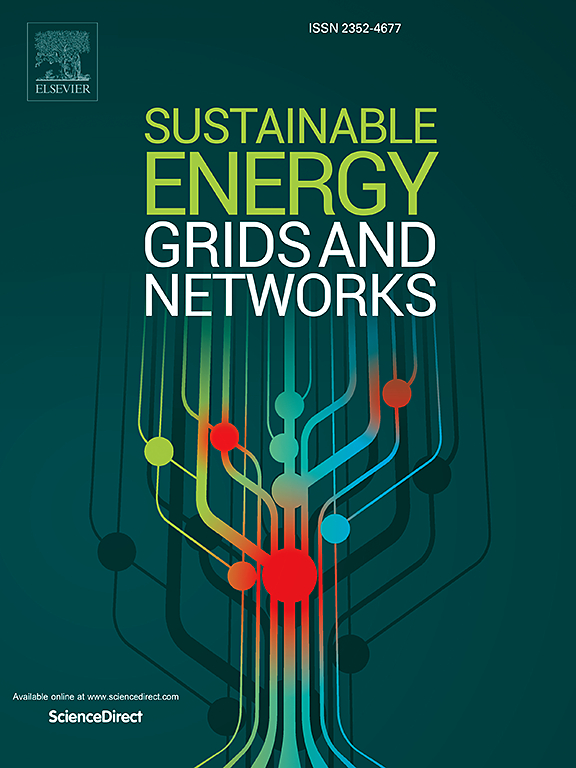基于市场的风电投资自适应稳健优化框架
IF 5.6
2区 工程技术
Q2 ENERGY & FUELS
引用次数: 0
摘要
风能以其生态友好性和可持续性而著称,是发展最迅速的可再生能源(RES)之一。因此,有必要确定最有利可图的风电场安装计划。本文利用自适应鲁棒优化(ARO)为基于市场的风电投资(WPI)问题构建了一种新方案。本文建立了一个三层鲁棒风电投资(RWPI)模型,第一层是最小化投资成本加最坏情况损失。在第二个层次中,最坏情况损失(也称为最大遗憾)是通过最大化不确定性集上的最小利润减值来确定的。第三层是风电场利润最大化。由于利润计算需要确定当地边际价格 (LMP),因此第三级构成了双级编程,上一级是利润最大化,下一级是市场清算过程。首先,应用卡鲁什-库恩-塔克(KKT)条件将双层模型转换为单层模型,从而在第三层生成一个包含二进制变量的 ARO。然后,采用嵌套列和约束生成(NCCG)策略求解具有混合整数追索权的 ARO。通过案例研究验证了所提模型的可扩展性和实际应用性。本文章由计算机程序翻译,如有差异,请以英文原文为准。
Adaptive robust optimization framework for market-based wind power investment
Wind is distinguished by its eco-friendliness and sustainability, making it one of the most rapidly expanding forms of renewable energy sources (RESs). Hence, it is necessary to determine the most profitable plan for wind farm installation. This paper constructs a novel scheme for market-based wind power investment (WPI) problems using adaptive robust optimization (ARO). A tri-level robust WPI (RWPI) model is established, the first level of which is to minimize the investment cost plus the worst-case loss. In the second level, the worst-case loss (also known as the maximum regret) is identified by maximizing the minimum value of minus profit over the uncertainty sets. The third level maximizes the wind farm profit. Since the profit calculation requires the determination of the locational marginal price (LMP), the third level constitutes bi-level programming, with the upper level being the profit maximization and the lower level being the market clearing process. First, Karush-Kuhn-Tucker (KKT) conditions are applied to convert the bi-level model to a single-level model, resulting in an ARO with binary variables at the third level. Afterward, the nested column-and-constraint generation (NCCG) strategy is employed to solve the ARO with mixed-integer recourse. A case study is used to verify the scalability and practical applicability of the proposed model.
求助全文
通过发布文献求助,成功后即可免费获取论文全文。
去求助
来源期刊

Sustainable Energy Grids & Networks
Energy-Energy Engineering and Power Technology
CiteScore
7.90
自引率
13.00%
发文量
206
审稿时长
49 days
期刊介绍:
Sustainable Energy, Grids and Networks (SEGAN)is an international peer-reviewed publication for theoretical and applied research dealing with energy, information grids and power networks, including smart grids from super to micro grid scales. SEGAN welcomes papers describing fundamental advances in mathematical, statistical or computational methods with application to power and energy systems, as well as papers on applications, computation and modeling in the areas of electrical and energy systems with coupled information and communication technologies.
 求助内容:
求助内容: 应助结果提醒方式:
应助结果提醒方式:


